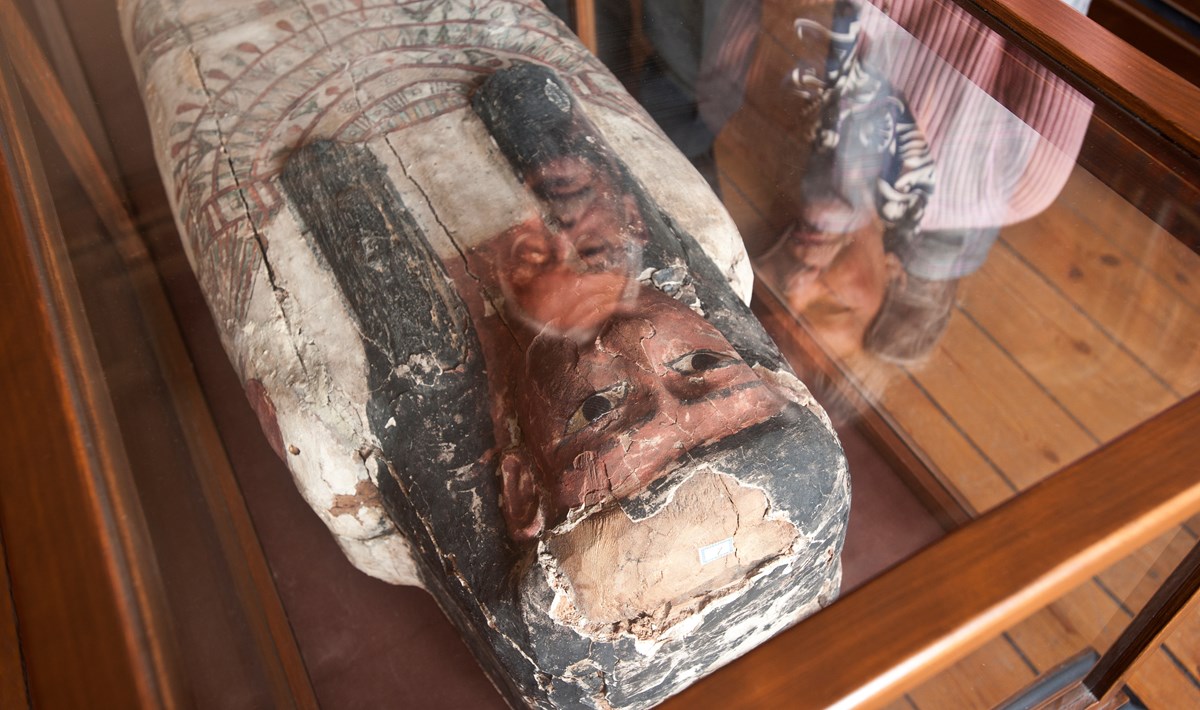The Tourist Travels

Iset-Min’s sarcophagus, mummy masks, twigs from the herb garden of Gethsemane, a piece of wood from the Mount of Olives, old photographs, travel documents and travelogues, all closely watched over by the guard, Anubis. The collections in this section reflect the early tourist travels made by the museum's founder, Adolf Andersohn, in the second half of the 19th century. Andersohn was one of Vänersborg's first tourists and made trips around Europe every year, where he visited German spas, the major capitals, art galleries, castles and museums as well as the world exhibition in London. This exhibition follows Andersohn on his longest journey, referred to as the Travels in the Orient alongside the Mediterranean in 1867-68.
This exhibition displays Egyptian sarcophagi and ancient grave goods brought here by the Swedish consul-general in Alexandria, Oscar Von Heidenstam. The traces of the balsamic process made by General Kesertis are visible on the sarcophagi along with portraits of the dead. Also on display are grave goods and offerings such as food, jewellery and fragments of clothing – all supposedly guarded by the ancient Egyptian God Anubis.
After his journey to Egypt during the 1860s, Adolf Andersohn became fascinated by the ancient Egyptian culture. A few years later, as he planned for the opening of the Vänersborg Museum, Adolf Andersohn envisaged a section on ancient Egypt similar to those that could be found in all other great museums in Europe. Through contacts with the consul-general and with an Italian art dealer, he managed to acquire the collection at an antiquities market and had it shipped to Vänersborg in 1886, where it has been ever since.






